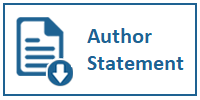Media Bureaucracy and Citizen Journalism
Challenges For Mass Media Reporting Practices in Indonesia
DOI:
https://doi.org/10.31937/ultimacomm.v14i2.2891Keywords:
bureaucracy, journalism, mass media, citizen journalismAbstract
The emergence of citizen journalism in a news story has its own dilemma. On the one hand, citizen journalism presents a news story on an event quickly, naturally, and without intervention from any party. But on the other hand, citizen journalism also has the potential to deliver fake news (hoaxes) and news that does not pay attention to journalistic rules and codes of ethics. This dilemma actually poses its own challenges for the mass media to accommodate citizen journalism reporting into a rigid and hierarchical media bureaucracy. This study aims to obtain an overview of bureaucracy in the mass media in a news story and find out the consequences of mass media collaboration with citizen journalism. The method used in this study is a qualitative research method using the classical organizational communication theory by Max Weber, namely bureaucracy. Informants consist of editors-in-chief, editors, journalists, and public relations selected from several mass media representing print media (Pikiran Rakyat), electronic media (MNC Media and RRI), and online media (Kumparan and Mojok). The results of this study show that bureaucracy is absolutely needed in all forms of reporting, both through conventional mass media and citizen journalism. Pikiran Rakyat, MNC Media, and RRI make information from citizen journalism as initial information which is then processed through bureaucratic procedures such as verification, confirmation, and follow-up to be used as news material. Meanwhile, Kumparan and Mojok provide space for citizen journalism through several channels while still following the prevailing media bureaucracy. This is done in maintaining the validity of news by paying attention to journalistic rules and codes of ethics.
Downloads
References
Ekwunife, R. A., Nwachukwu, H. I., & Ukeje, I. O. (2021). Bureaucracy and Citizen Journalism: Issues and Challenges Imperative for Media Practice in Nigeria. International Journal of Trend in Scientific Research and Development (IJTSRD), 5(6).
Kusnadi, & Priono, M. (2010). Citizen Journalism Indonesia: Suatu Wujud Dari Demokratisasi di Indonesia. Seminar Nasional FISIP-UT.
Muhtadi, A. S. (2016). Pengantar Ilmu Jurnalistik. Simbiosa Rekatama Media.
Ngadisah. (2015). Birokrasi Indonesia. Universitas Terbuka.
Sari, W. P., & Paramita, S. (2018). CITIZEN JOURNALISM DALAM MENANGGULANGI MASALAH SOSIAL (Vol. 01, Issue 02).
Setiawan, A. (1998). Perilaku Birokrasi Dalam Pengaruh Paham Kekuasaan Jawa. Pustaka Pelajar.
Sugiyono. (2019). Metode Penelitian Kuantitatif, Kualitatif, dan R&D. Alfabeta.
Yuniningsih, T. (2019). Kajian Birokrasi (R. Ciptaningsih, Ed.; 1st ed.). Departemen Administrasi Publik Press.
Yustitia, S. (2010). CITIZEN JOURNALISM MELAWAN MAINSTREAM MEDIA: Vol. II (Issue 1).
Downloads
Published
How to Cite
Issue
Section
License
Ultimacomm Jurnal Ilmu Komunikasi allows readers to read, download, copy, distribute, print, search, or link to its articles' full texts and allows readers to use them for any other lawful purpose. The journal allows the author(s) to hold the copyright without restrictions. Finally, the journal allows the author(s) to retain publishing rights without restrictions
1. Authors are allowed to archive their submitted article in an open access repository
2. Authors are allowed to archive the final published article in an open access repository with an acknowledgment of its initial publication in this journal














